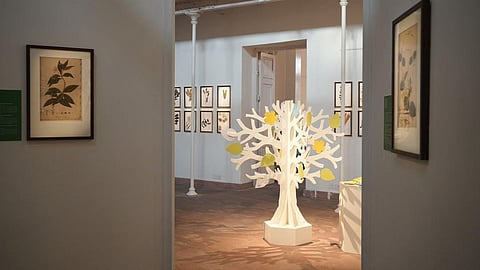
- HOMEGROWN WORLD
- #HGCREATORS
- #HGEXPLORE
- #HGVOICES
- #HGSHOP
- CAREERS
- ABOUT US
- CONTACT US

In 1823, a Scottish Major of the Bengal Artillery, British Indian Army, named Robert Bruce learned from an Indian nobleman named Maniram Datta Barua that the indigenous Singhpho tribe were growing tea in the mountains of Assam. Unfortunately, the Major died in 1824 before he could verify this, but fortunately, he had already sent the seeds of these wild tea plants to his brother Charles, a botanist, who was working at the Botanical Gardens in Kolkata (then Calcutta) at the time. Charles was successful in growing the seeds into tea plants at the Calcutta Botanical Garden, and he sent samples of these tea plants to a Danish botanist named Nathaniel Wallich for further verification. On Christmas Eve 1834, Nathaniel Wallich confirmed the discovery and declared that the samples Charles Bruce had sent were indeed from a tea plant.
“We are perfectly confident that the tea plant which has been brought to light, will be found capable, under proper management, of being cultivated with complete success for commercial purposes,” the Danish botanist wrote at the time.
Encouraged by this assurance that tea could indeed be grown in India, in territories controlled by the British, the East India Company engaged Robert Fortune — a Scottish gardener, botanist, plant hunter, and industrial spy — in 1848 to make a clandestine trip deep into China, inside territories forbidden to foreigners, to steal the closely guarded secrets of tea cultivation and processing.
Travelling through the walled city of Suzhou, Fortune shaved his head except for a traditional pigtail, wore Chinese clothes, and spoke Chinese to avoid detection. He was the first Westerner to realise that black and green tea came from the same plant, and managed to send over 20,000 tea plants on four different ships during his stay. Over the next five decades, the British East India Company founded several tea plantations across north-east India stretching from present-day Assam to West Bengal; and by 1890, India supplied almost 90 percent of Britain’s domestic tea market.
Drawing from similar histories, 'Travelling Plants' — a new exhibition at the Indian Museum initiated by Goethe-Institut and presented in collaboration with the Indian Museum, Ministry of Culture, Government of India, and Botanical Survey of India, Ministry of Environment, Forest, and Climate Change, Government of India — explores how plants have travelled across the world because of human intervention for aesthetic, political, and economic reasons, and shaped our history and influenced our cultures.
The exhibition is the culmination of a multi-phase, trans-disciplinary project led by Goethe-Institut Chennai in collaboration with Alliance Française of Madras, and Institut Français de Pondichéry (IFP). Beginning with a residency centred around the Herbarium at IFP in March 2024, ‘Travelling Plants’ brings together works of Indian and international artists selected for their creative practices intersecting with the natural world.
Curated by Lina Vincent, the exhibition showcases artistic observations, learnings, and investigations into varied sociocultural, political, ecological, and environmental concerns, offering unique perspectives at the intersection of science, nature, and art. The artists include Karolina Grzywnowicz (Germany), Wendy Therméa (France), Waylon D’souza (India), and Rashmimala (India).
The exhibition also features 19th and 20th-century correspondence between Indian and European botanists and scientists, and colonial era botanical studies commissioned by the British East India Company called ‘company paintings’ from the Botanical Survey of India’s collection, and selected herbal sheets of South Indian plant samples from the IFP’s vast collection of 27,000 such samples.
'Travelling Plants' is on view at Indian Museum, Kolkata, from September 6 to October 4, from 10:30 am to 6:00 pm daily (except Mondays and public holidays). Learn more about the exhibition here.
If you enjoyed reading this, here's more from Homegrown:
Top 7 Homegrown Tea Brands Started By Indians
For The Love Of Chai: 16 Artisanal Tea Brands On Our Radar
5 Beautiful Tea And Coffee Estates Around India You Can Stay At
